

Hungry Platter
THE PRODUCT:
An app that bridges the gap between surplus food to those in need, reducing waste and supporting communities.
PROJECT DURATION: January 2023- July 2023
MY ROLE: UX Researcher, UX/UI designer, designing the app from conception to delivery.
SOFTWARES USED: Figma, Miro, Google forms, Pen/paper
India ranks
107/121
countries, with a serious level of hunger.
Bangalore alone wastes
943 tonnes
of quality food during weddings.
‘Enough to feed 2.6 crore people a normal Indian meal.’
The Hungry Platter app addresses the critical issue of food wastage and hunger by creating a seamless connection between restaurants and hunger spots in local communities. By leveraging technology, Hungry Platter will enable restaurants to donate excess food to NGOs and communities, reducing wastage and supporting the underserved.
75%
of restaurants have
10–20% extra preparation.
50 KG
food wastage/person in India.
Sources:
-
United Nations’s Food Waste Index Report 2021
-
https://www.telegraphindia.com/opinion/food-wastage-and-hunger/cid/1809152
User research
Challenges & Research goals -
-
Identify the specific needs and pain points of different user groups.
-
How to make the app popular and increase community engagement for better reach.
-
Since volunteers make a bridge between these two stakeholders for the app. How can we engage and increase volunteers for smooth flow of this product?
Primary research -
After doing some research I wanted to know what problems do individuals face. For this I felt interview method would be the best and I created a set of questions focused on their experiences in public gatherings and food orders-
-
How many times in a year/month do they involve in public gatherings?
-
How many times a month do they order from outside or dine out?
-
What is their take on food wastage either in public gatherings or individually?
-
What facilities would they think work to reduce food wastage?
I interviewed 4 individuals from different user groups -
-
A mid-age male who has lead large or medium size gatherings.
-
A garbage collector.
-
An individual who is between 20 - 30 yrs. of age.
-
A home maker.
For better understanding I grouped the insights gathered from user interviews on the basis of similarities. I was able to categorise them as follows:

Competitive analysis
Since limited number of such apps are available in India, so I took some other examples outside India. Although their context might be very different but I tried to look for ideas which can be utilised in Indian context as well.
There was one other setback that organisations like Feeding India by Zomato had a very different context when compared to a standalone app which needs to attract volunteers on it's own.
I compared the below apps -
-
No Food Waste
-
OLIO
-
Karma
Took inspiration from Feeding India by Zomato, Magic Pin app and Playo, since the last two apps are also using gamification elements to make their apps interesting and increases user engagement.
No Food Waste -
Users themselves can mark hunger spots, which the team verifies and enters in their database.
Users can also donate food or request the app to deliver the donation using its volunteer drivers.
Users drop the food at designated collection points or local facility centers for small groups.
OLIO -
A food sharing platform among neighbours.
Users add a photo and description of their item, indicating when and where to pick it up. Customers can donate fresh garden vegetables, bread from bakeries, and unwanted household food.
Karma -
It helps users get the surplus fresh food in dicounted prices.
When restaurants are about to close it alerts the neighbouring areas and users can book and pick up the food.
Solutions -
I found 5 ways of cutting food wastage which can be made in use by apps -
-
Deliver wasted food to needy.
-
Needy comes to food waste spot.
-
Allocation of delivery spots where needy can come and collect the surplus food.
-
Leftover can be sold at high discount at end of the day.
-
Surplus food can be exchanged for other goods of value for the individual.
User Persona
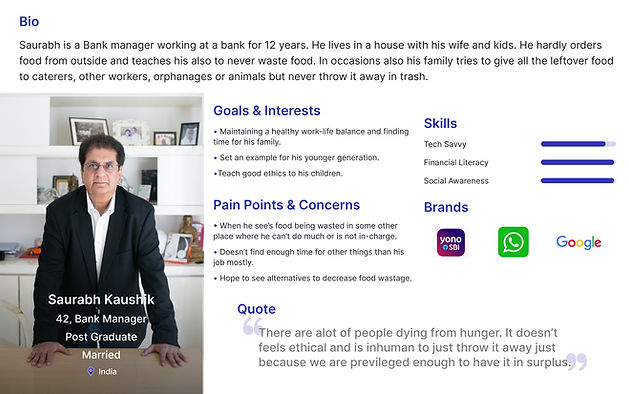
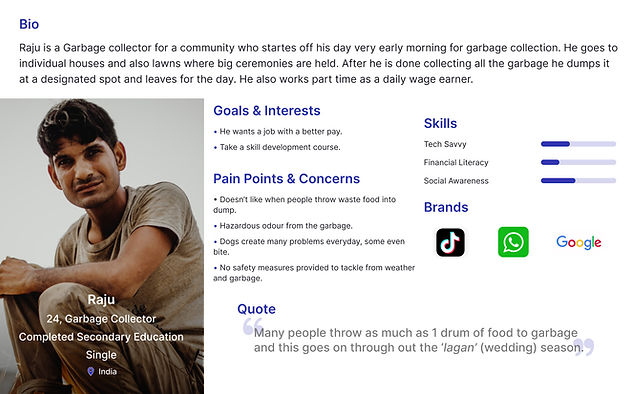

PROBLEM STATEMENTS
GIVER
WHO? - A restaurant that has food left over at the end of the day and cannot sell it the next day because it’ll be stale
WANT? - to giveaway the leftover food after day ends,
BUT? - being a small and busy business, it’ll cost them time and money to donate and distribute the food which
FEELING? - makes it a frustrating issue for them.
TAKER
WHO? - An association helping out the homeless people in town
WANT? - to get food quickly delivered to them before it gets wasted
BUT? - there aren’t enough platforms to look for surplus food for donating so I can’t find enough for everyday
FEELING? - Sad , Helpless
INDIVIDUAL TAKER
WHO? - An event planner
WANT? - Find someone (person or organisation) that may need surplus of food from my events
BUT? - I don’t know where to find them
FEELING? - wasteful and sad
Journey Mapping
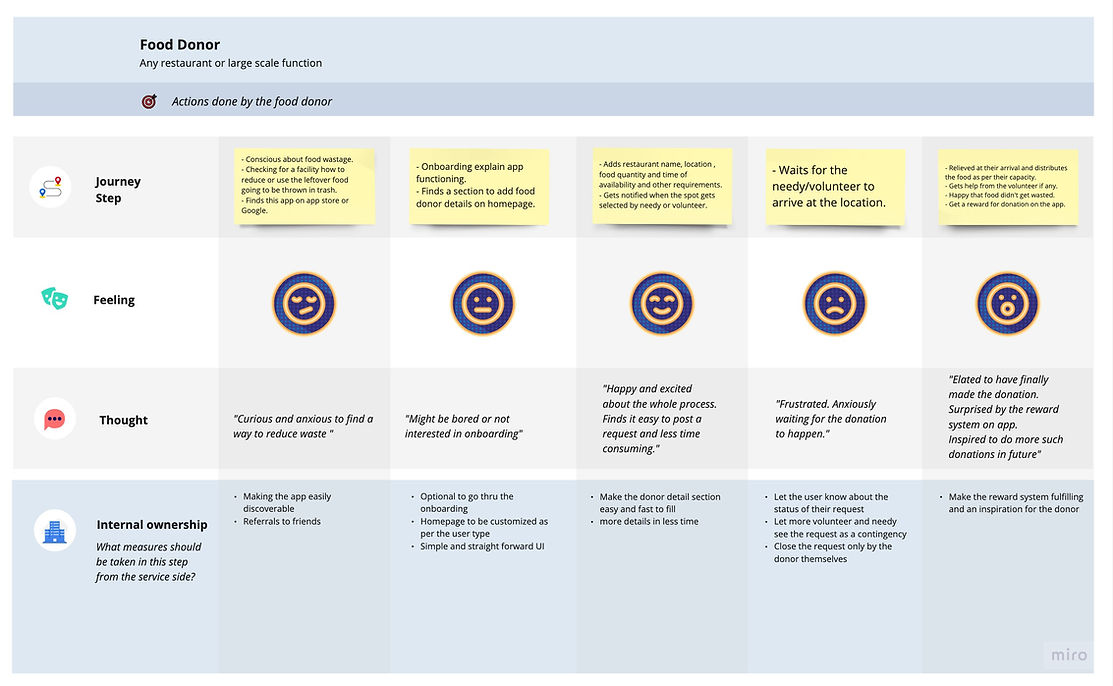

User flow and Site map
Based on the Competitive analysis, I created a user flow for the priority items which were:
-
Registration flow
-
Donation flow
-
Volunteer feed
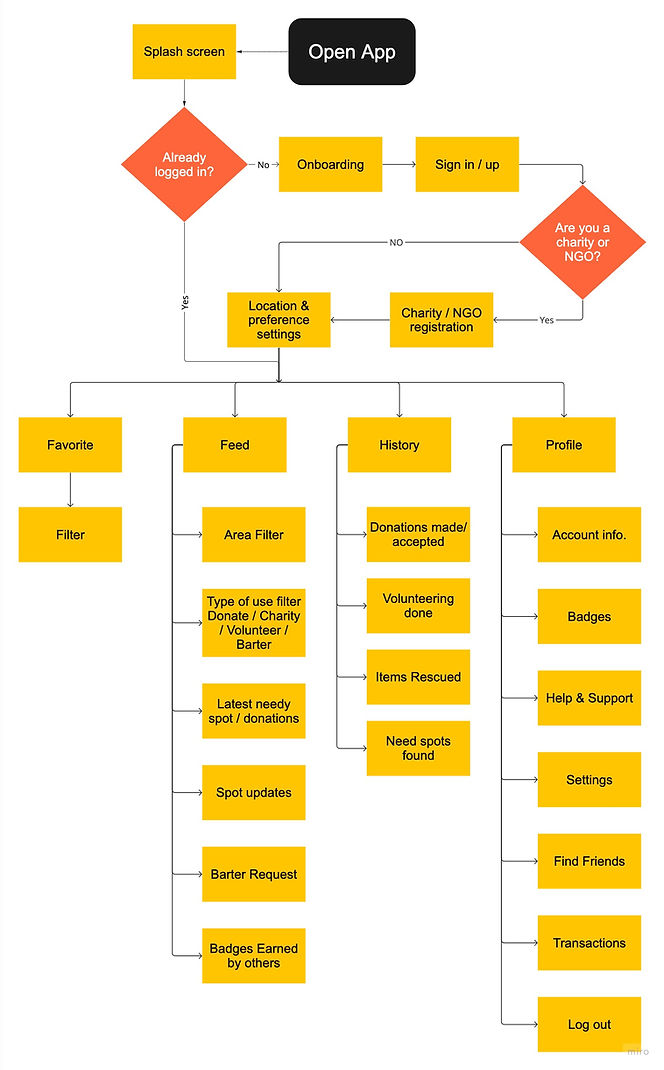
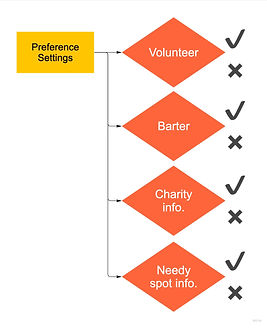
Preference settings after logging in where the user can choose to filter their feed info. as per need and also can be changed later on.
I wanted to use some happy/friendly names for monotonous terms like -
Donation = ‘Surprise bag’
Donors = ‘Waste warriors’
Need spot = ‘Necessity Nook‘ or ‘Seeker spot’
Volunteers = ‘Social Activist’
Ideating

How can we engage and increase volunteers for smooth flow between the two major stakeholders which were Donors and the Needy?
While brainstorming some ideas that popped up :
NGO affiliations/certifications
Reward function
Badges
Followers building community reputation
Making some iterations of the main screens by sketching to get in the flow and then slowly work on to the details and other pages.
Major question that was still not resolved:
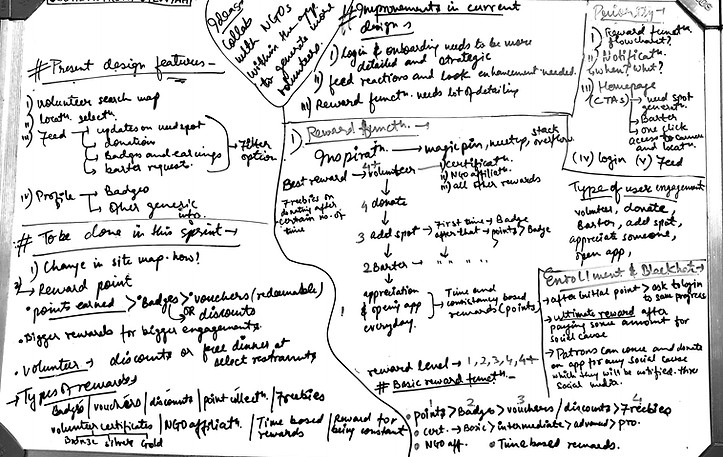


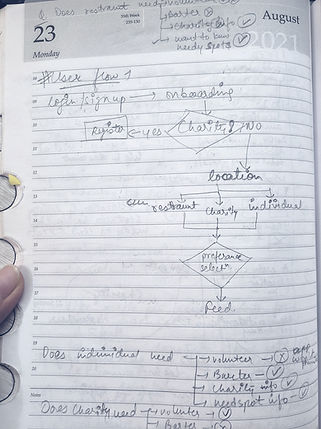

Reward System and Levels



Mid-Fidelity Designs
First to get into a flow I did some fast iterations on design just to put my brain on to the canvas.
These clips are part of the first draft explaining the process.

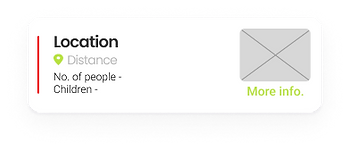


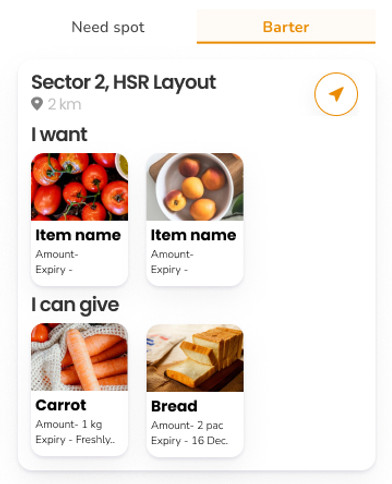


Micro
Interventions
The coloured vertical lines indicate the current status of need spot request.
-
Yellow line - Issue addressed but not resolved
-
Green line - Issue addressed and resolved
-
Red line - Issue not addressed
Feed
Information
Providing the activities been done by others pushes the users to lend a helping hand and instills a sense of belonging.
Credit points
& badges
Numerous researches state that giving credit and points encourage the users to participate more.
So a reward function is used to motivate the users to use the app for all their needs.
Barter
System
A person can put up a request to exchange, another in need can check and exchange unwanted item, limiting food wastage.
Cards
Categorised similar data in form of cards which are-
-
Available need spot card
-
Donation card
-
Badge card
-
Barter card


Iterations after Testing
-
Reward system needed to be more detailed as the major stakeholders relied on volunteer contributions.
-
Added orange color to the palette as it provides a feeling of friendliness, food and joy.

Name with their achievements badge will be shown in profile to provide a feeling of community.
All their achievements & badges in front and bold for motivation to continue and engage more with the app


Posts button in nav. bar as the primary button, introduced for faster post addition and smooth flow
Old Design


Search, filter and notification buttons to make app more user friendly.
Introduced favourite icon to make it easy for users to go back to the need spot or barter request they feel most comfortable in donating to.
Changed the post reaction bar as the users were getting confused in some of the functionalities.
Old Design
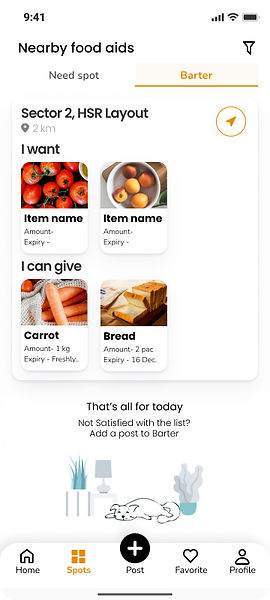
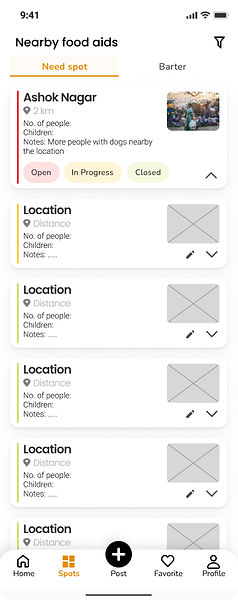
Segregation of Need Spot and Barter Request for easy navigation as per user requirements
Single click editing of posts for faster and real time updates

Improvisation TBD in next Version
Add some features like:
-
Chatting with the donor and volunteer for real time update and transparency in the process.
-
Work on building a community within the app.
-
More collaborative experiences e.g with schools, temples, NGOs and similar institutions.
-
Providing a more friendly name for volunteers, donors and need spots as given above.
-
Refining the gamification elements introduced to increase user engagement.